The road to Agra is lengthy but in good condition, we break the journey with a stop at the Chand Baori Step wells that are incredibly interesting, 13 levels of steps leading down into the underground water storage area. It’s the deepest and largest stepwell in India, and dates back to the 8th or 9th century. With 3500 steps cascading the 13 stories it’s fascinating. We marvel at the architecture of the whole place, the symmetry and precision. It always amazes me how these places built so many hundreds of years ago are so precise. Corners that are sharp, wonderful decorative carving and generally fabulous composition. The temple alongside the wells have a sardu welcoming the Hindu faith. We pay a small fee and have the traditional welcome tikki and red and yellow strings tied around our left hands.
Then on to Agra. The city lies on the banks of the Yamuna river, in the Indian state of Uttar Pradesh. We are now at another corner of the golden triangle. The Mughal emperors in the early 16th century, notably Sikandra Lodhi saw Agra emerge as a centre of learning, arts, commerce and religion. The Mughal rulers ensured Agra was the foremost city in the subcontinent at the time of their rule. They built Agra fort, Fatehpur Sikri and of course under Shah Jahan’s instruction the TajMahal was constructed.
Our hotel is located within a kilometre of the Taj, and when we climb to the rooftop we can catch a glimpse of the Taj Mahal rooftop domes, the mosque to the left and the accommodation on the right of the building. It’s a bit of a thrill for all! We choose a restaurant with Taj views and enjoy traditional Indian curries with naan breads whilst admiring the view of this fabulous monument.
Up early the next morning we walk down to the East gate entrance of the Taj, then continue down its lengthy wall to the banks of the Yamuna river. It’s quiet and peaceful, there are locals bathing and chatting and no other tourists. The Yamuna is unfortunately polluted, so much plastic floating along in it, from what was once a life force to what is now a silty plastic-filled barely flowing waterway it’s a sad state. Water has been diverted further up river for agricultural needs and with the pollution combination it causes the river to be a trickle of its former self. There are still some birds inhabiting it, namely house crows, stilts, herons, some ducks and surprise surprise pigeons! They are all busily sitting by the river edge or wading in the river. This used to be where you could organise a boat ride down the river behind the Taj to watch the sun set over it. Boats don’t do this any more, there’s not enough water to float in. It’s a shame as it was a lovely way to see the Taj.
We return for a light breakfast then Hari collects us to take us around an hours drive out toward Bharatphur to visit Fatepur Sikri or “city of victory”. It sits up on a rocky ridge, was built by the moguls in the 1600’s and it’s yet another ßddd vs wonderful deserted fortress to wander around. The architecture is amazing, the carving and inlay work is divine. Fatehpur Sikri was built in 1571 as the capital of the Mughal empire, by emperor Akbar, but was only lived in for 14 years, then completely abandoned a few years later. It lay abandoned for many years, until 1815 when the then marquess of Hastings ordered the repair of the buildings. There’s a fortress and a mosque in the build, both are equally as impressive we have a wonderful couple of hours there. We go to a delicious lunch recommended to us, enjoy some great food and tried some fab sweets as a takeaway. We farewell Hari after this outing, he has more than done his job, safely getting us across country!
The Indian icon awaits us the next morning, up early and met by a prearranged guide Beekay, we wander down to the Taj. It’s a cool morning with a bit of cloud, entry tickets purchased (around $26), we go through the security section. Security here is always interesting, no drones, food, batteries, makeup, chewing gum, books or notepads. The bags are x-rayed, we are frisked and we are in the gates! The Taj can be enjoyed from any angle at any time of day. It’s white marble reflects the day, taking on hues of blues, greys and yellow. It’s certainly a marvel, Beekay gives us the history and the materials in the building facts. It’s an easy wander around, shoe covers on for the main event, crowded in the internal part of the mausoleum, but a stunning, stunning building that’s for sure. Shah Jahan had a wonderful vision when he thought to build it for his beloved wife Mumtaz.
After almost three hours we finish in the Taj compound and head off in an auto to visit Agra fort, a sad building in my opinion. Shah Jahan’s son Aurangzeb, locked Shah Jahan up in this building for eight years to prevent him building a black mausoleum on the opposite bank of the Yamuna river. Shah Jahan died in this building then was laid to rest in the Taj. The building itself with enormous red sandstone bricks and white marble is massive. There are views out over the Yamuna river and the Taj Mahal. It’s a lovely place for a saunter around.
Our last place to visit is named tomb of I’timas-ud-Daulah, yet another mausoleum. It’s considered the draft for the Taj Mahal, it again is built in red stand stone and white marble it’s a miniature replica of the Taj. It has a beautiful garden area with pomegranate and oleander trees, with marigolds along the borders. It’s a very peaceful little spot.
So our time in India draws rapidly to a close, we are ready to make our way back to Delhi for an overnight stay and an early departure for Australia Our final intercity transport is the train, so after a nice short walk to the banks of the Yamuna to have one final look at the Taj we hop in a big car and head to the railway station. It’s a 3.5 hour journey so armed with good books we head off, often summarising over the journey what has been a fabulous holiday. Thanks India - you were fun
See you on the next adventure!





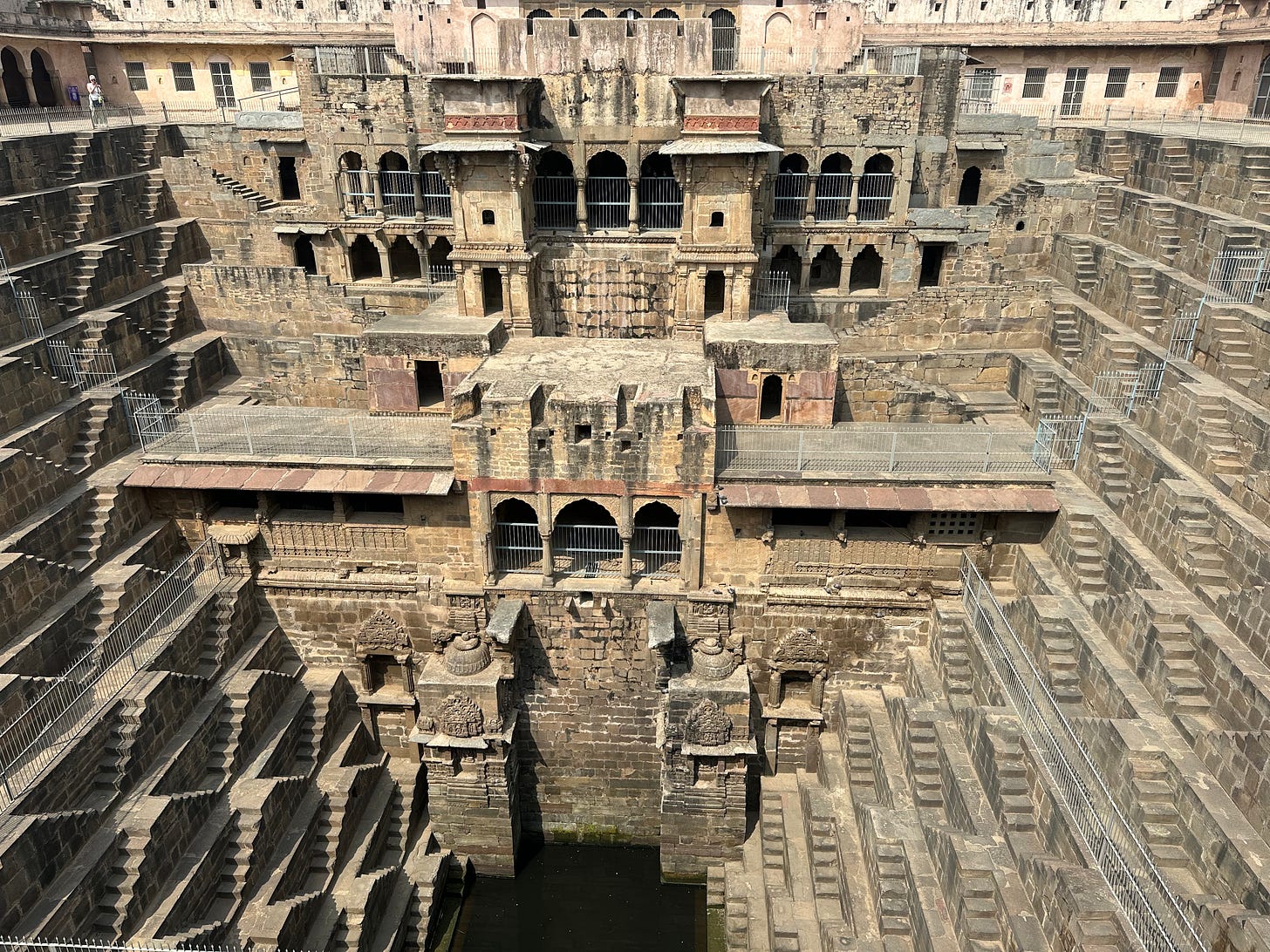
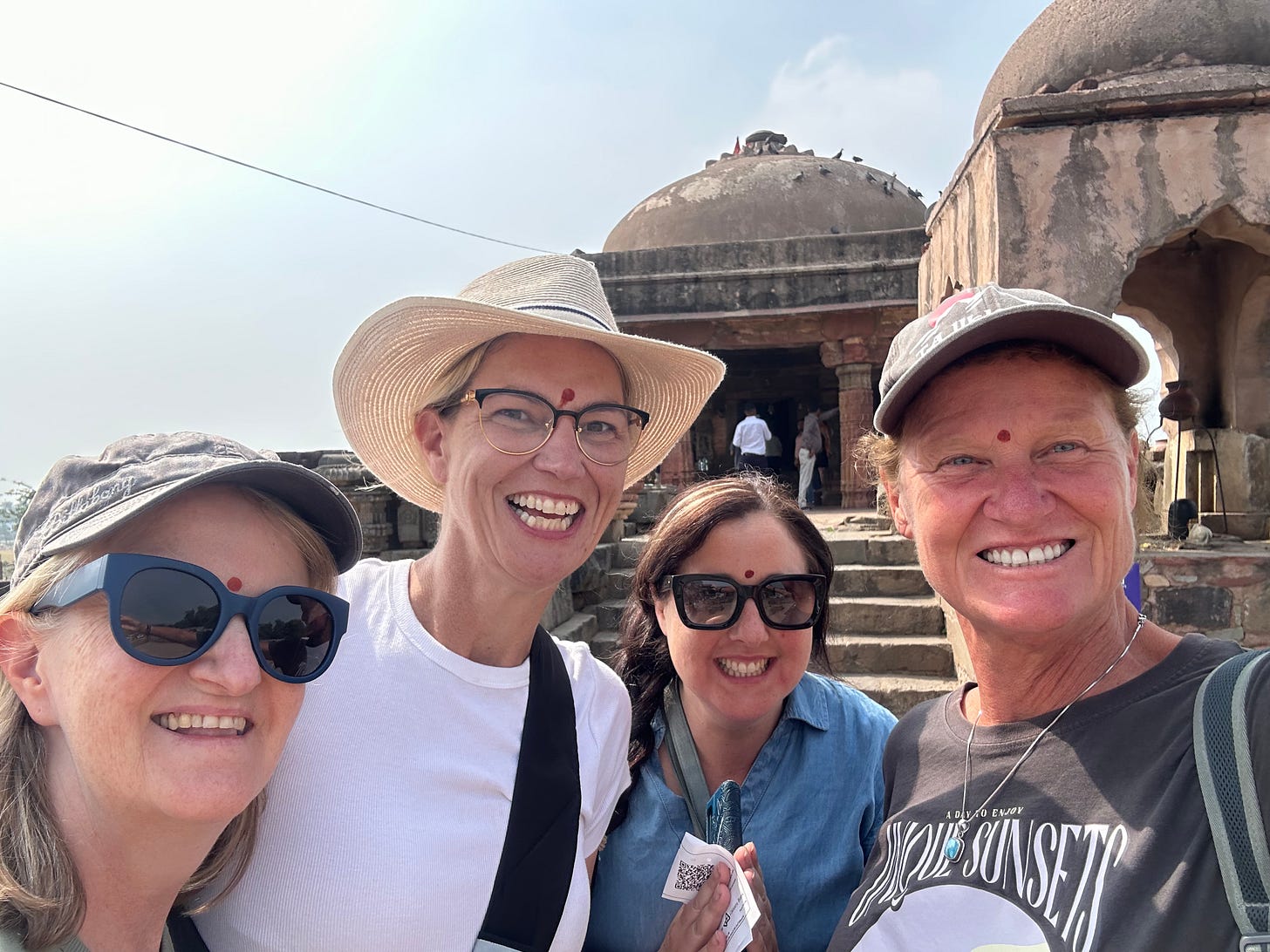
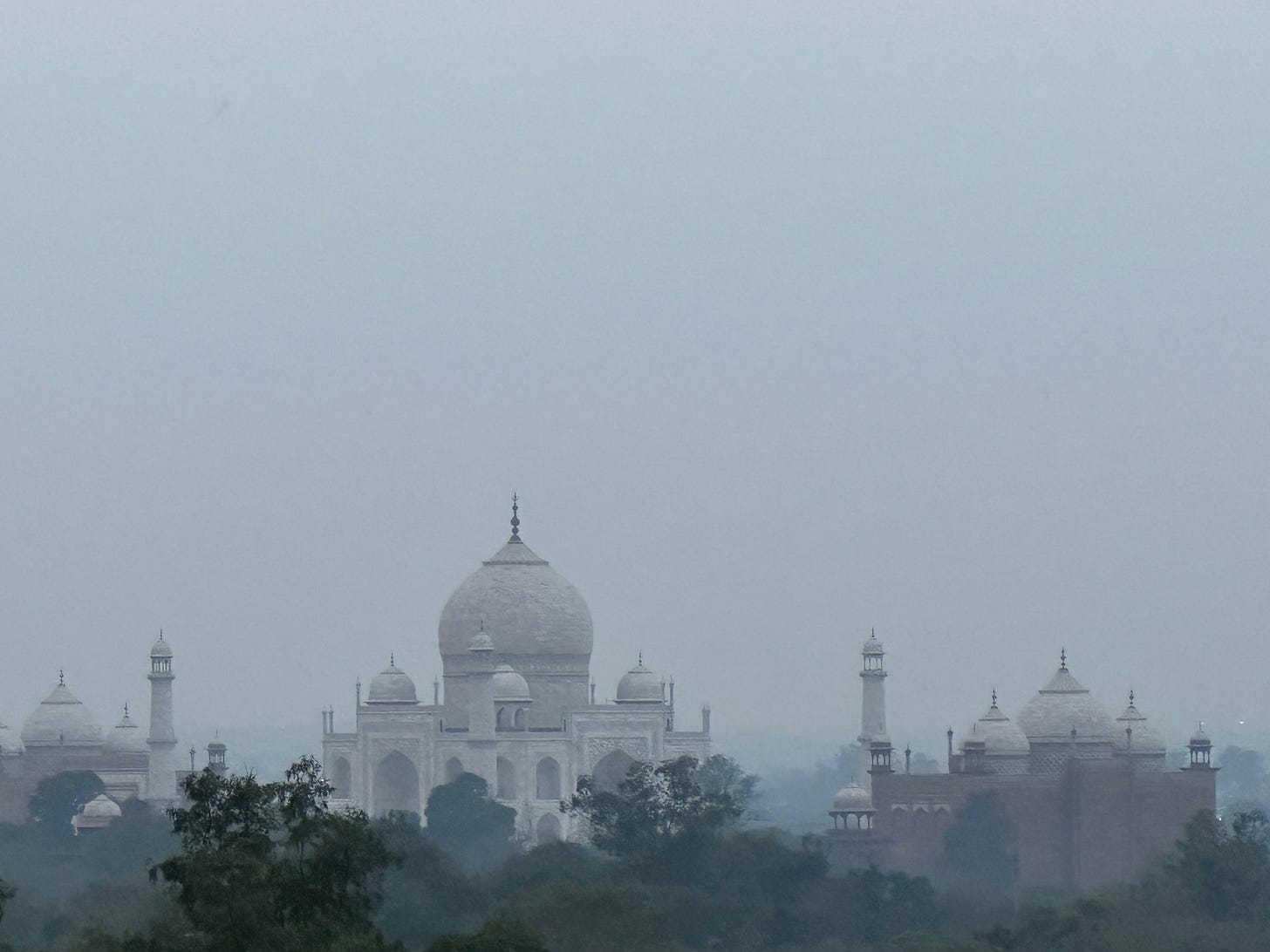
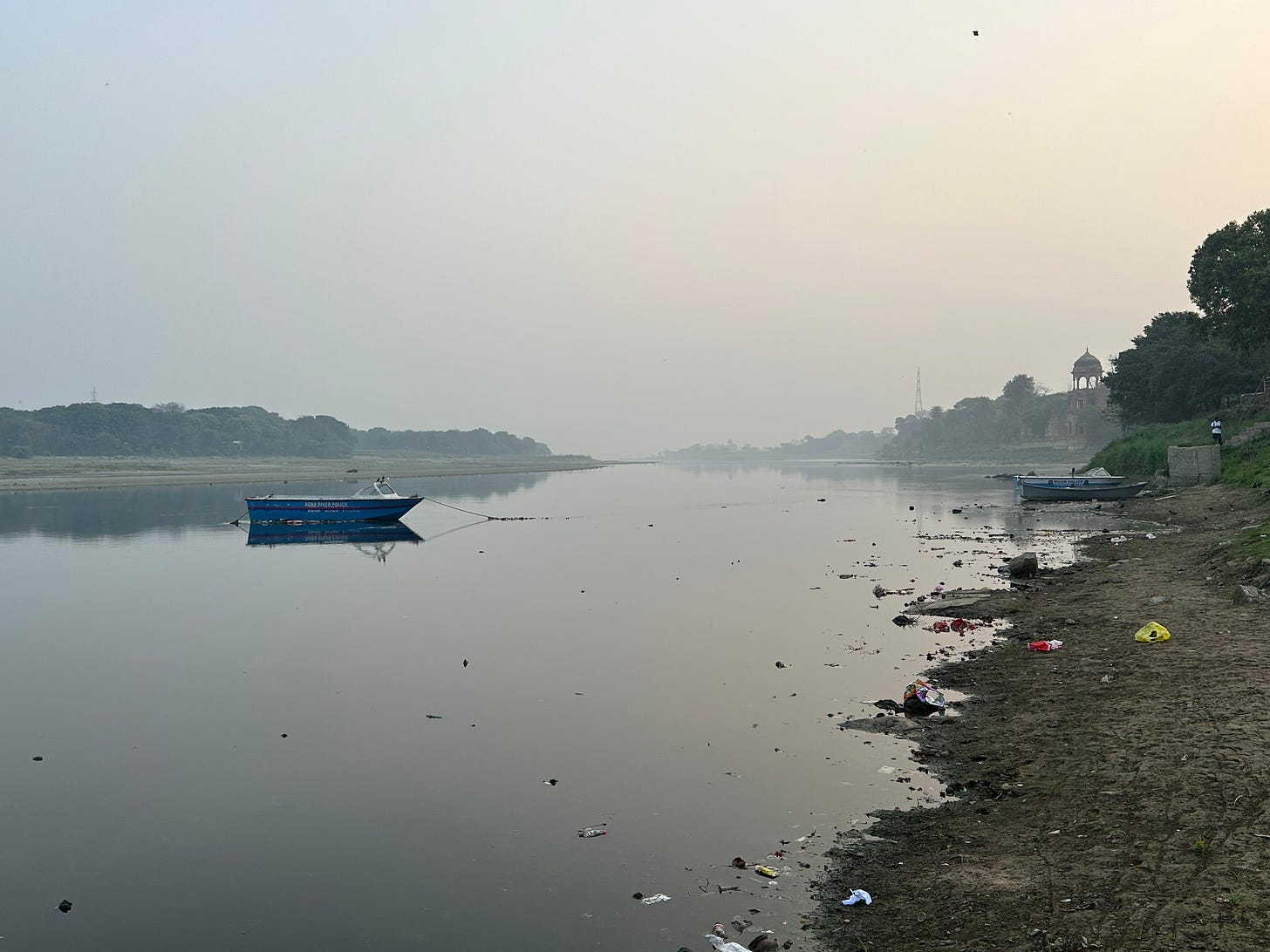
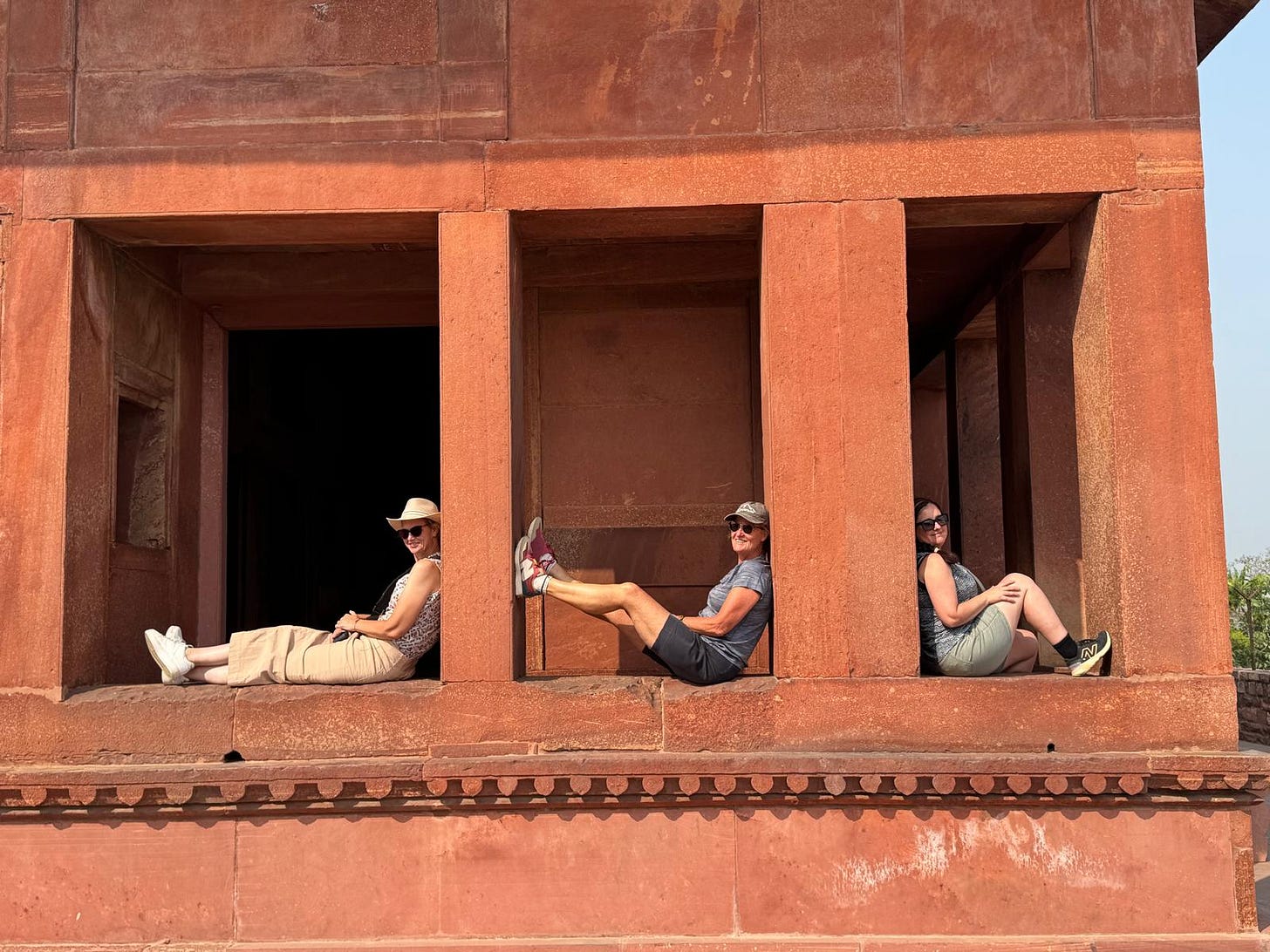

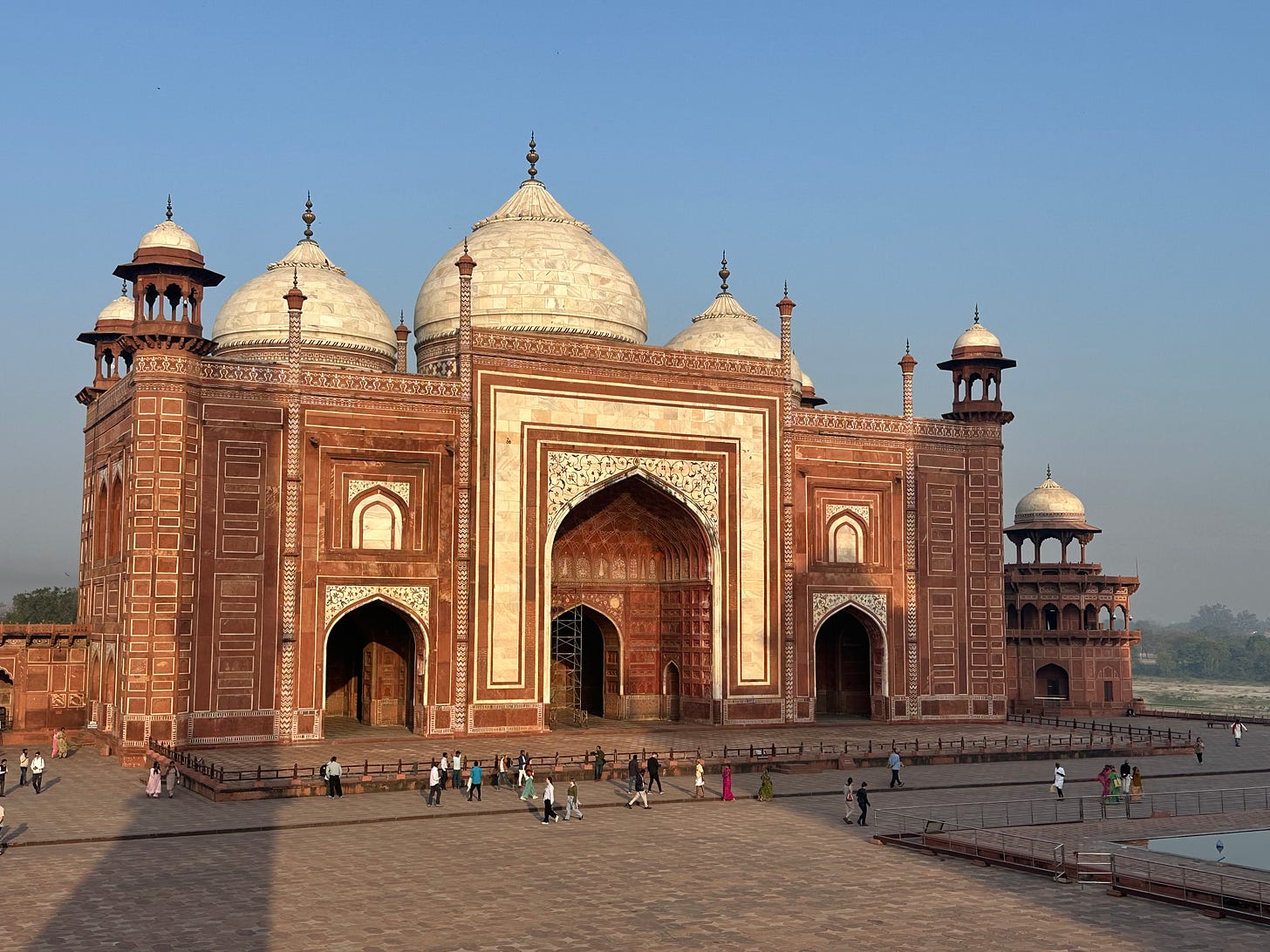
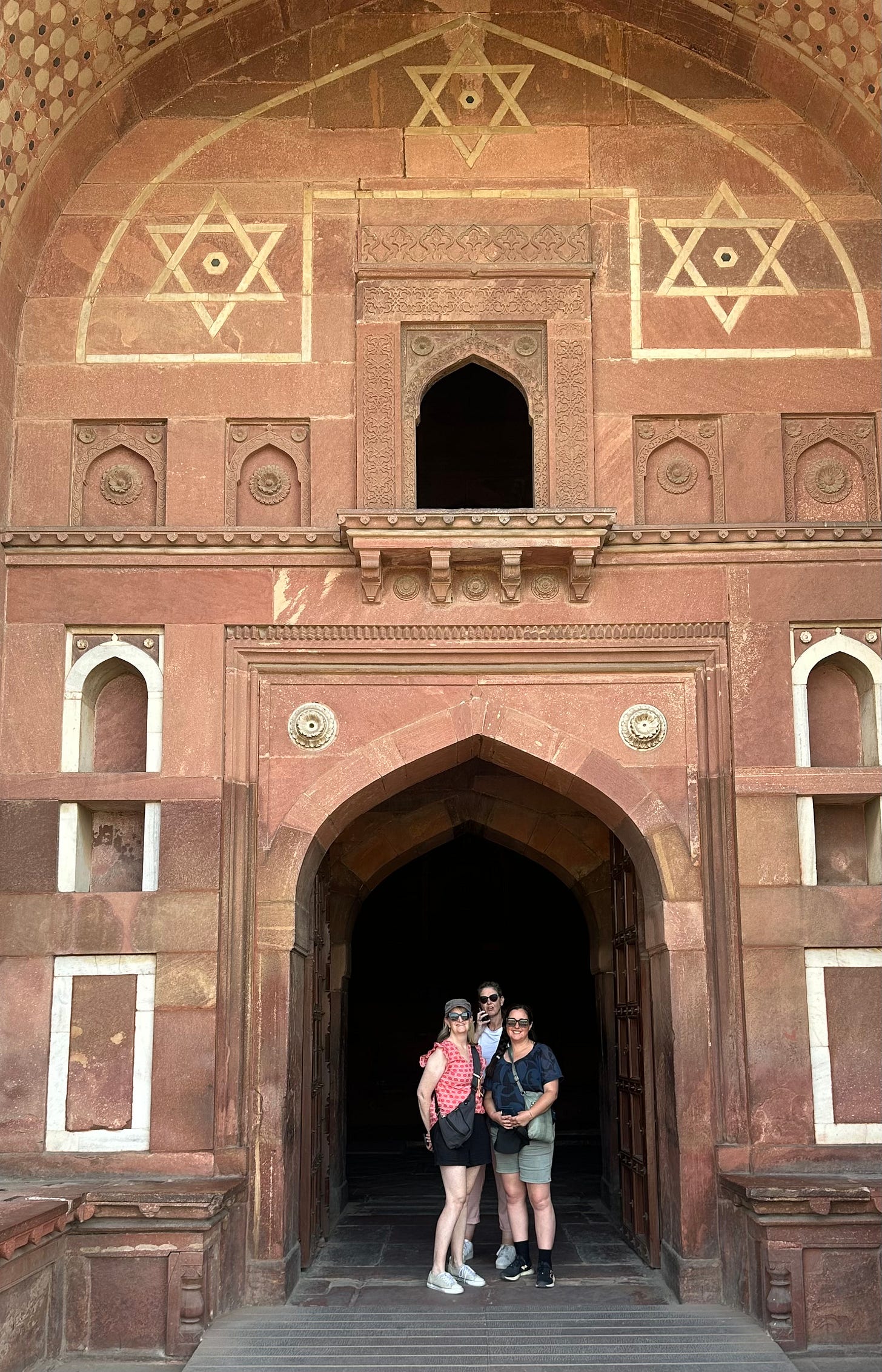



That’s the best photo that I’ve ever seen of the Taj, Lisa. You have had a magnificent trip, all together.